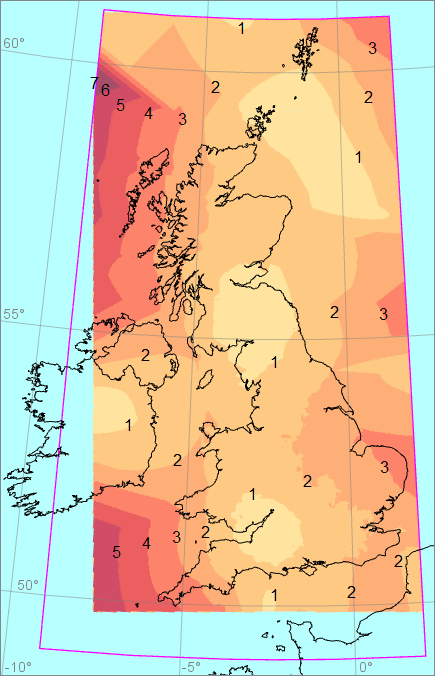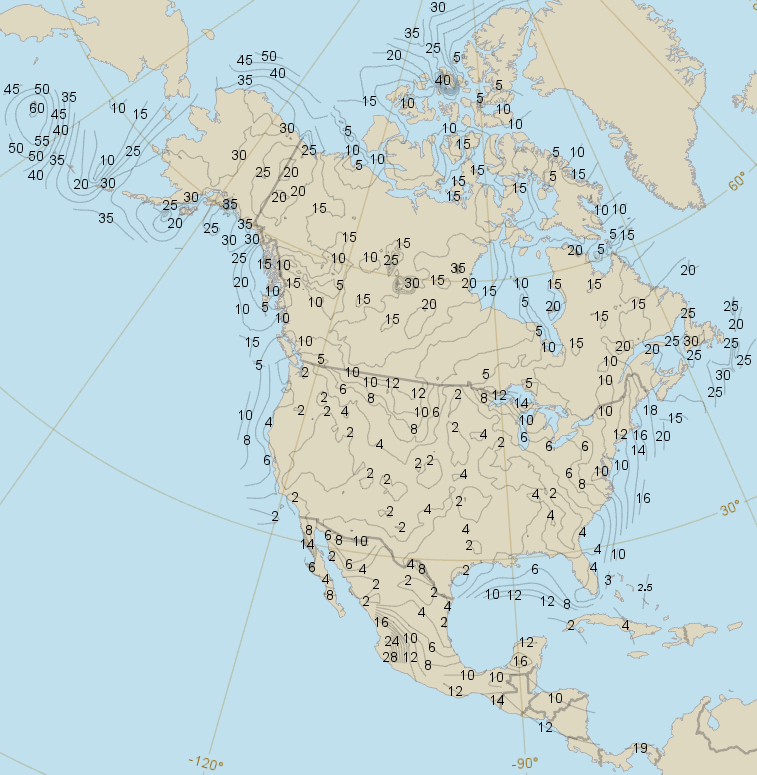DatumShiftChoice Enumeration
Tells how the datum shift shall be chosen when a geodetic datum is constructed automatically.
NuGet/Assembly: Carmenta.Engine.5.17.0.nupkg (in the CECore assembly)
Syntax
public enum DatumShiftChoiceValues
| Value name | Value | Description |
|---|---|---|
| Conservative | 0 | A default datum shift will be chosen only if Carmenta knows one that is generally useful; otherwise, an exception will be thrown. |
| Lenient | 1 | A default datum shift will always be chosen, even if its accuracy may be bad or unknown. |
Remarks
There are several ways to use a DatumShiftChoice:
It can be given as argument to the methods Crs.FromAuthorityAndCode and Crs.FromWellKnownText.
It can be set as a Crs property, Crs.DatumShiftChoice, which is useful in Carmenta Studio when constructing a Crs only from authority and code (such a construction will internally call Crs.FromAuthorityAndCode).
It can be set as a property on certain kinds of dataset, which can automatically set the DataSet.Crs property from the data files. These datasets are the EcwDataSet, the GdalDataSet, the ImageDataSet, the Jpeg2000DataSet, the OgrDataSet, the RaveGeoDataSet and the ShapefileDataSet.
Conservative
In the description of Conservative above, the words generally useful are not precisely defined.
By useful, we mean that the estimated accuracy of the datum shift should be fairly good, preferably 10 meters or better. However, we consider some published datum shifts to be useful even if their accuracy is as bad as 50 meters, especially if it seems hard to find any better alternatives.
By generally, we mean that the datum shift should work in the entire area of use for the geodetic datum, or at least most of the area (we think that isolated islands sometimes can be ignored).
Of the about 500 geodetic datums published by EPSG, the conservative choice will throw an exception for about 75 datums. Examples of geodetic datums that will throw an exception are NAD27 (North America), ED50 (Europe and the Middle East) and Kalianpur 1880 (Pakistan, India, Bangladesh and Burma).
Lenient
A lenient choice ensures that a default datum shift is always chosen automatically. Examples:
NAD27 will get a Helmert datum shift intended for the contiguous United States (CONUS), with an accuracy there of 10 m (67 percent confidence), worst error is 18 m in Maine. However, NAD27 is used in all of North America, and outside CONUS the error can be can be up to 60 m. See image below.
ED50 will get a Helmert datum shift intended for continental Europe, with an accuracy of 10 m (67 percent confidence), worst error is at least 15 m.
Kalianpur 1880 will get an identity datum shift saying that longitude and latitude in Kalianpur 1880 are the same as in WGS84. This is because Carmenta knows nothing about how Kalianpur 1880 is related to WGS84.
Of the about 75 EPSG datums that require a Lenient default datum shift, about 40 are like Kalianpur 1880 in that their lenient default is just the trivial identification with WGS84. The accuracy is then unknown, but usually better than 1000 m; the automatically generated DatumShiftInfo will give the accuracy as 1111 m.
However, if a geodetic datum (not necessarily in the EPSG database) uses an Ellipsoid that is a sphere, there is a problem that some geodata, like MISR Regional UAE2 Imagery from NASA, uses spherical latitude in an unusual way that causes differences up to 21 km from WGS84. But spherical longitude/latitude in the common meteorological models WRF, MM5 and NinJo should coincide with WGS84.
Some special cases
Polar azimuthal map projections
During construction of a CRS with an azimuthal map projection centered on a pole, the behavior will always be as if the DatumShiftChoice were Lenient, regardless of its actual value. This is because in practice, these types of map projections are not used for older geodetic datums that are incompatible with WGS84, so there is no reason to be conservative. This special behavior is useful mainly for a spherical geodetic datum, since it will apply spherical projection formulas directly to longitudes and latitudes expressed in WGS84, which is what we want (example: the polar projection zones in the ASRP format). So, ignoring Conservative in these cases lets the CRS constructor avoid throwing an unnecessary exception.
The British datum OSGB36
Like other traditional geodetic datums, the British datum OSGB36 is not compatible with WGS84, but unlike most other countries, British authorities have decided to keep their old datum as the base for their national CRS, OSGB36 / British National Grid.
For this British datum, you can use the DatumShiftChoice to indicate whether you need high accuracy, but the semantics is somewhat unusual:
Lenient gives an simple Helmert datum shift (EPSG:1314) with errors up to 5 meters.
Conservative gives a highly accurate datum shift that is based on a grid shift file from the Ordnance Survey and that falls back to the simple Helmert datum shift outside the file bounds.
The semantics is unusual for OSGB36 in that the two settings produce different datum shifts – usually they will produce the same datum shift unless the Conservative choice throws an exception.
The grid shift file for the British datum is included in the data folder of Carmenta Engine, so it will always be available. However, the simple Helmert datum shift is more efficient, so if you can accept errors up to 5 meters or if your application is intended for a part of Great Britain where the errors are smaller, you may prefer the Lenient choice.
The following map shows the the lenient errors in meters:
 |
Strictly speaking, the map shows the differences between the simple Helmert datum shift and the one based on the grid shift file. These differences can be understood as the errors of the lenient datum shift onshore Great Britain, because that is where OSGB36 was defined originally and where the grid shift file should give better than 3 cm accuracy (if its results are interpreted as ETRS89 coordinates rather than WGS84). The original datum was not defined offshore Great Britain or on Ireland, but since a grid shift file is based on a raster with rectangular bounds, the Ordnance Survey decided in 2015 to extrapolate the shift values offshore and onto Ireland. They also tried to produce a smooth transition to the simple Helmert datum shift that is recommended as a fallback (EPSG:1314), but there are discontinuities up to 7.1 meters along the boundary. One could regard the extrapolation as a modern extension of the area where OSGB36 is defined, but the Ordnance Survey says that the area of use should be restricted to the Exclusive Economic Zone of the United Kingdom.
Literature:
Ordnance Survey. A Guide to Coordinate Systems in Great Britain, V3.6, 2020.
Mark Greaves et al. OSGM15 and OSTN15: Updated transformations for UK and Ireland. Geomatics World, July / August 2016.
What is best?
The Conservative way is the default, and will throw an exception when it fails. Then, you cannot overlook that you should choose a datum shift manually. The drawback is when this exception is thrown as a Crs is extracted from dataset files: it is not just the datum shift that you will have to construct manually, but also the rest of the Crs (the Projection, the Ellipsoid and so on).
The Lenient way is convenient since it will display your geodata in roughly the right place. But you must remember to check that the displacement is not too bad, and choose a better datum shift manually if necessary. If you need to replace the datum shift, you can search for alternatives at https://epsg.org. You can also use the method GeodeticDatum.AlternativeDatumShifts or GeodeticDatum.AlternativeDatumShiftsForArea. See the article Letting a DataSet read its CRS from data files.
Accuracy of the lenient datum shift for NAD27
The map below shows error estimates (in meters) of the lenient datum shift for NAD27, a datum shift that is really intended for the contiguous United States only.
 |
The map was made by comparing the lenient datum shift with better local datum shifts. In Central America, the available local datum shifts do not have high accuracy, so the error estimates are uncertain there.
Platforms
Windows, Linux, Android